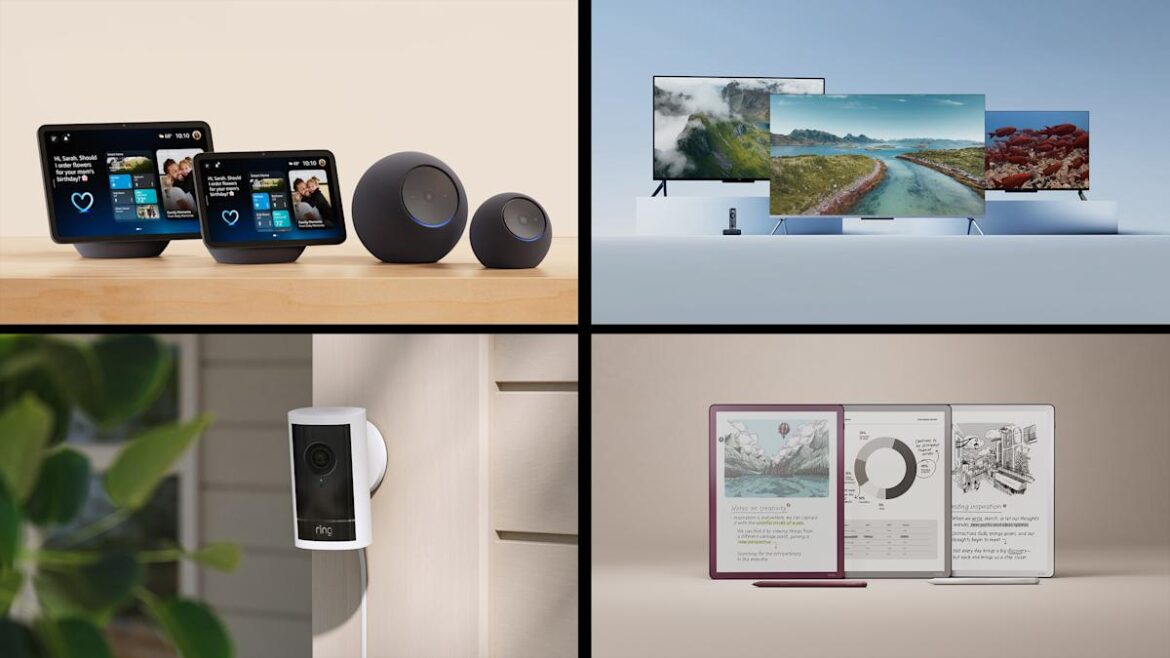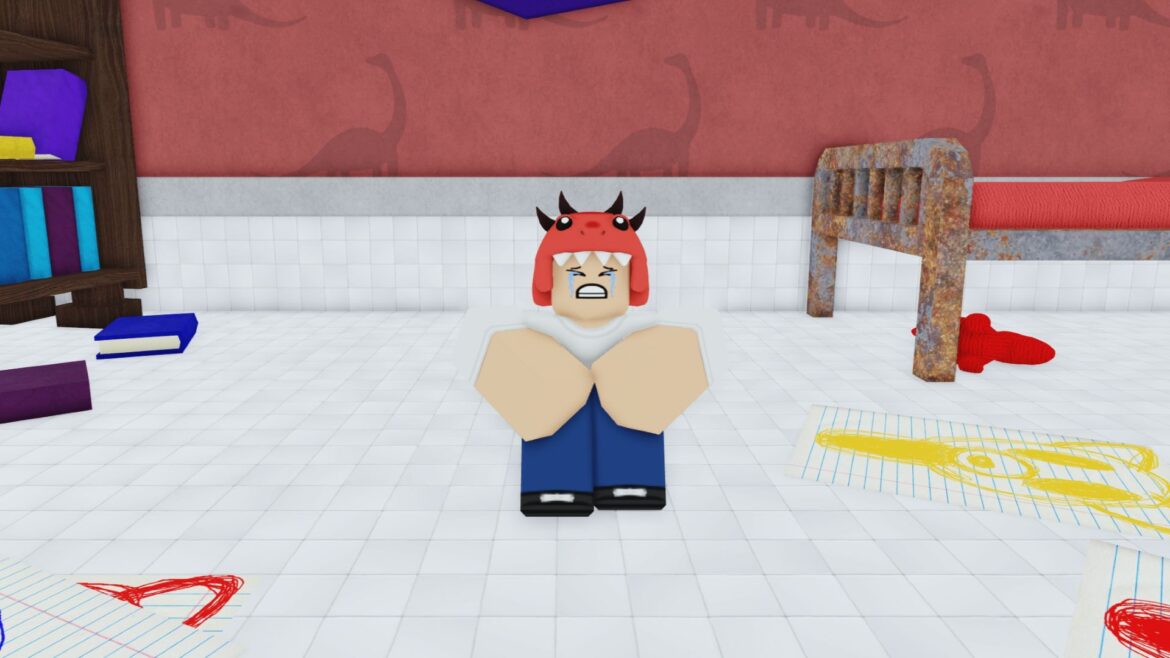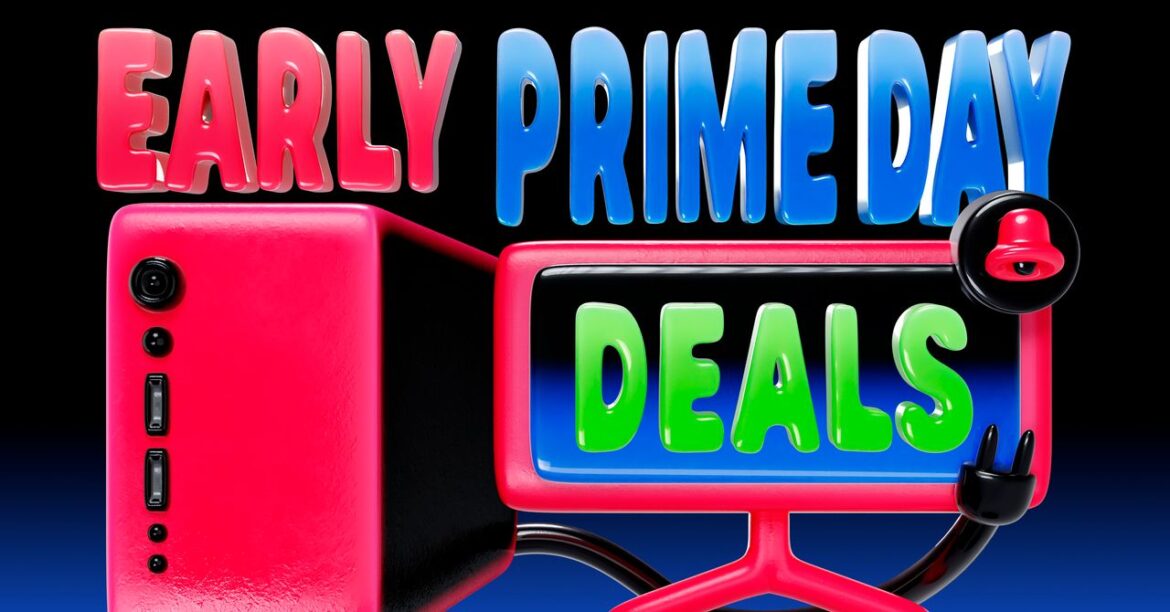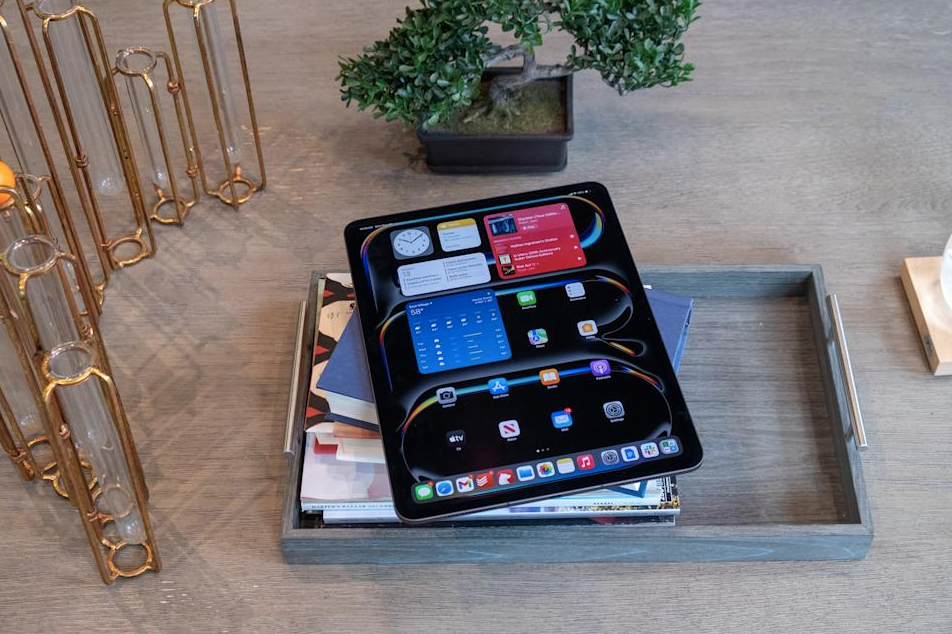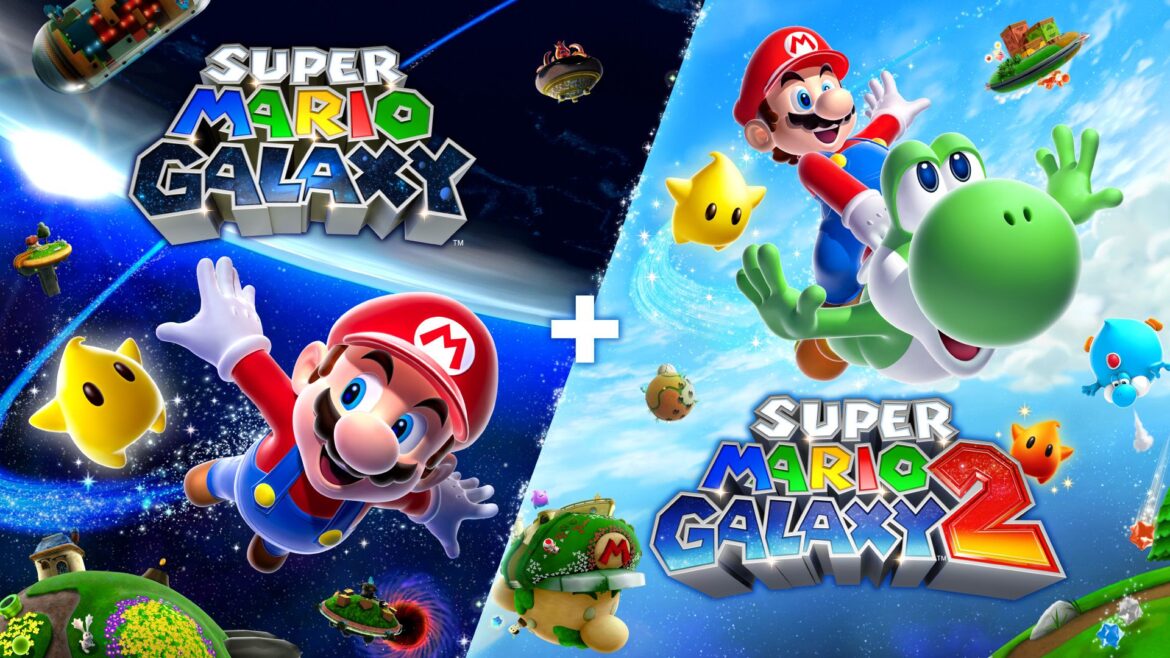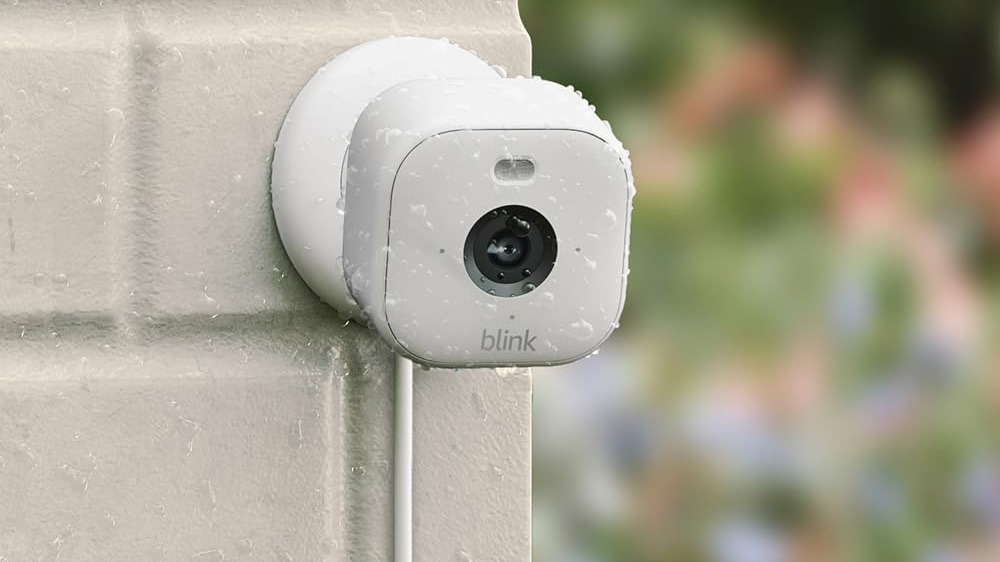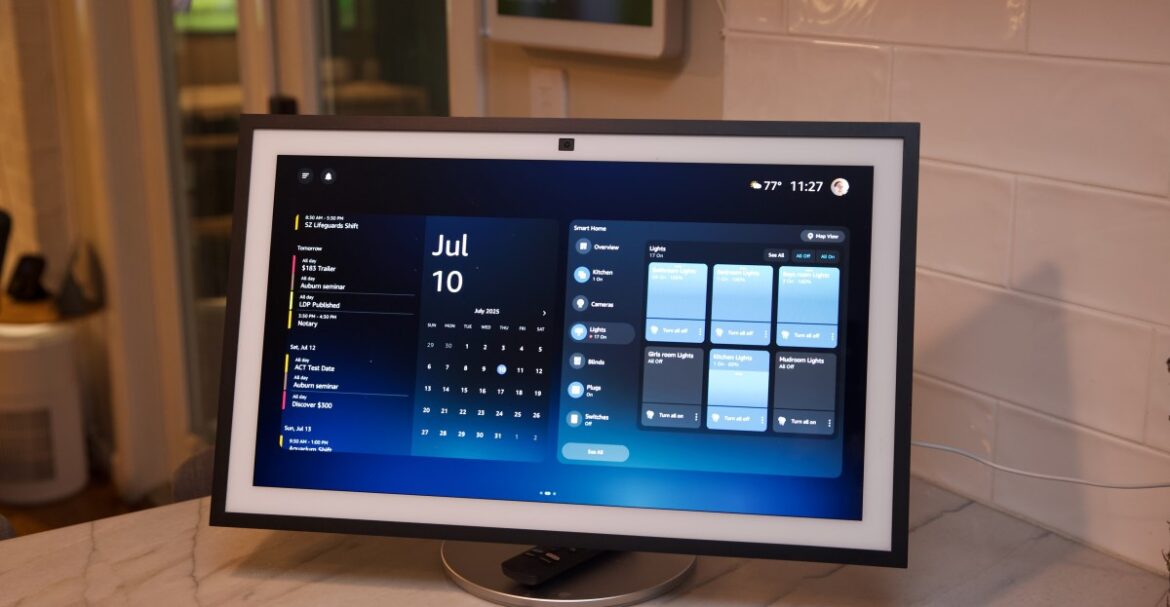It’s not technically Techtober yet since we’re one day shy, but we’ve already had a bunch of fall hardware events from some of the bigger companies in the tech space. Today, it was Amazon’s turn to step up to the plate.
Going into its event, the company teased new Echo speakers and Kindle news. Rumors suggested Amazon was ready to ditch its long-standing Android-based OS on Fire TVs in favor of the Linux-based Vega OS it’s already using on the Echo Show 5, Echo Hub units and Echo Spot.
Indeed, Echo, Kindle and Fire TV are all being featured at the event, along with Ring and Blink devices. Oh, and lots of Alexa+ updates, of course.
Amazon doesn’t usually livestream its product events and that remained the case here. However, we’ve got you covered with all the news and announcements with both our liveblog and this here rundown of everything Amazon announced at its fall hardware event:
Echo speakers
The Echo lineup was beyond overdue for a refresh — it’s been five years since the 4th-gen Echo arrived, while the most recent Echo Studio debuted a couple of years later. And, with Amazon looking to push Alexa+, it’s certainly time for some new models.
To that end, the $100 Echo Dot Max and $220 Echo Studio are up for pre-order and will ship on October 29. No sign of a new standard Echo this time!
The Echo Dot Max delivers almost three times the bass of the fifth-gen Echo Dot and sound that adapts to your space, Amazon claims. The company added that the updated design integrates the speaker directly into the device’s housing, freeing up extra space for more bass. In fact, the Echo Dot Max has two speakers: a “high-excursion woofer optimized for deep bass and a custom tweeter for crisp high notes.”
Amazon has shrunk down the Echo Studio to 60 percent of the size of the last version. Even so, it has a “powerful high-excursion woofer that delivers deep, immersive bass and three optimally placed full-range drivers to create immersive,” room-filling sound, according to the company. The latest model supports spatial audio and Dolby Atmos.
If you’re in the US and you snap up either of the new Echo speakers — or the latest Echo Show devices — Amazon says you’ll get early access to Alexa+. We’ve had a chance to try the speakers, so be sure to check out Engadget senior reporter Jeff Dunn’s first impressions.
Alexa Home Theater with Echo
Amazon is looking to take on the likes of Sonos with a home theater feature. You’ll be able to connect as many as five Echo Studio or Echo Dot Max devices to a compatible Fire TV stick for surround sound.
The company says that, with the Alexa Home Theater feature, Alexa will take care of everything after you plug in your speakers. That includes tuning them for your space automatically. Amazon will sell the Echo speakers in Alexa Home Theater bundles too.
Echo Show
2025 Echo Show smart displays
(Amazon)
Quelle surprise, Amazon has refreshed the Echo Show smart displays. As with the rest of its new products, Amazon built the Echo Show 8 and Echo Show 11 with Alexa+ in mind.
They boast new front-facing stereo speakers and upgraded microphones, all the better to bolster the chats you might have with Alexa+. The new units have improved cameras with 13MP lenses. Alexa will be able to recognize you when you approach the device and display personalized information. It might show you, for instance, an AI-powered summary of footage from your Ring devices. The Echo Show smart home hub supports devices in the Zigbee, Matter and Thread ecosystems too.
As for the display, both of the new Echo Show units have a negative liquid crystal screen designed to maximize viewing angles. Amazon also said there are new color-coded calendars to help everyone in the family to stay on top of their schedules. Alexa will keep an eye out for scheduling conflicts. Such a clever cookie.
The new Echo Show 8 costs $180, while the Echo Show 11 will run you $220. Pre-orders for the latest Echo Show models open today. They’ll ship on November 12.
The new Echo Show 8 costs $180, while the Echo Show 11 will run you $220. Pre-orders for the latest Echo Show models open today. They’ll ship on November 12. Be sure to check out Engadget senior writer Sam Rutherford’s initial impressions of the latest models.
Kindle Scribe Colorsoft
Kindle Scribe Colorsoft
(Amazon)
The Kindle Scribe 2 and Kindle Colorsoft appear to have been smushed together, as there’s now a full color version of Amazon’s writing tablet (which has some other upgrades). The company is using its custom display tech for the Kindle Scribe Colorsoft, which has a color filter and “light guide” with nitride LEDs. The idea, according to Amazon, is to boost color without washing out details.
The company says it developed a new rendering engine for the Kindle Colorsoft too. It claims this helps make sure writing on the device feels fluid, natural and fast. Moreover, the Kindle Scribe Colorsoft is said to run for several weeks on a single charge.
You’ll be able to choose from 10 pen colors for writing, drawing and annotation. There are five highlighter colors as well.
The Kindle Scribe Colorsoft will be available in the US later this year, starting at $630. It’s coming to the UK and Germany in early 2026.
We’ve been able to try out the Kindle Scribe Colorsoft. You can check out Engadget managing editor Cherlynn Low’s initial hands-on impressions.
Refreshed Kindle Scribe
Amazon is refreshing the regular Kindle Scribe too. It has a larger, 11-inch display to match the proportions of a sheet of paper. It’s 5.44mm (0.2 inches) thin and weighs 400g. Amazon also says it’s 40 percent faster than the previous model when it comes to page turns and writing.
The standard 2025 Kindle Scribe shares a bunch of features with the Colorsoft model. Both boast a front light system with miniature LEDs, a texture-molded glass that’s designed to improve friction for writing and revamped display tech that’s said to make it feel like you’re writing directly on the page.
The latest devices have a quad-core chip and more memory than previous models. That helps to power new AI-driven features. You’ll be able to get an AI-generated summary of information that you search for across your notes and the option to ask follow-up questions. Starting in early 2026, you’ll be able to send notes and other docs from your Kindle Scribe to Alexa+, and have a conversation with the chatbot about them.
There’s support for Google Drive and Microsoft OneDrive, so you can pull in documents from there to mark them up. There’s an option to export annotated PDFs, as well as to export notes as converted text or an embedded image to OneNote.
The home screen has a new Quick Notes function to help users start jotting down their thoughts faster. You’ll have swift access to recently opened or added books and documents from there too.
Meanwhile, there’s a new pen that attaches to your Kindle Scribe. This refreshed Kindle Scribe will go on sale in the US by the end of the year, and it starts at $500. A version without a front light will be $430. Again, these models will be available in the US and Germany in early 2026.
Fire TV
The image Amazon sent out as part of its event invite included the corner of a television, hinting that Fire TV would get some time in the spotlight during today’s event. And, yup, that turned out to be the case.
There’s a new 4K streaming stick called the Fire TV Stick 4K Select ($40). Amazon says it supports HDR10+ and your favorite streaming services. Support for Alexa+, Luna and Xbox Cloud Gaming is on the way too. As with the other Fire TV devices Amazon announced today, pre-orders are open and the Fire TV Stick 4K Select will ship next month.
If you’d rather have the Fire TV ecosystem baked into your television, Amazon’s got you covered there. The latest Omni QLED Series models have displays that are 60 percent brighter than previous versions, Amazon says. The TVs adjust their display colors automatically depending on the ambient lighting and can turn on by themselves when they detect your presence. The TV can also display your photos or artwork and switch off when you exit the room. The Omni QLED Series TV come in 50-inch, 55-inch, 65-inch and 75-inch variants and start at $480.
The Omnisense feature is available on the latest 2-Series Fire TV models too. These budget-friendly 4K options are said to be 30 percent faster than their predecessors. A Dialogue Boost feature will be present on all the latest Fire TV models. You can snap up a 2-Series Fire TV in either a 32-inch or 40-inch variant, starting at just $160.
Janko Roettgers of LowPass reported last week that Amazon was set to bring its Vega operating system to Fire TV by the end of this year. Whaddya know? The company confirmed that it’s bringing Vega to Fire TVs and streaming devices, including the 4K Select. So, it’ll debut in October on at least one device. Amazon didn’t say when it would roll out the OS more broadly, but helpfully noted that Vega is “responsive and highly efficient.”
Blink
2025 Blink camera lineup
(Amazon)
No, you didn’t miss it: there are new Blink devices as well. All of them can capture 2K video, and pre-orders for all three go live today.
Amazon says the $90 Blink Outdoor 2K+ has a 4x zoom, two-way talk with noise cancellation, enhanced low-light performance and, for Blink Plus subscribers, smart notifications when people and vehicles are detected.
The $50 Blink Mini 2K+ is primarily designed for indoor use, but you can place it outside thanks to a weather-resistant power adapter. Otherwise, it has the same features as the Blink Outdoor 2K+.
Blink had an entirely new device to show off as well. The Blink Arc looks quite odd, almost like a pair of goggles. It houses two Blink Mini 2K+ cameras and combines the footage into “a single, seamlessly stitched feed.” If you have a Blink Plus subscription, you’ll have access to a 180-degree view. The Blink Arc can also be used outside with the weather-resistant power adapter. It costs $100, and the mount is an extra $20.
Ring
Retinal Vision is a concept that Ring has built its latest devices (for what it’s worth, the name reminds me I’m probably due for an eye exam). The idea is to use AI to optimize image quality. It taps into back-side illumination sensors to deliver superior low-light performance, Amazon says.
A function called Retinal Tuning samples your Ring camera’s video quality several times per day for up to two weeks in a attempt to improve it. Large-aperture lenses in the new devices will help with all of that.
To that end, Amazon has announced a Wired Doorbell Plus with 2K visuals for $180 and the Indoor Plus Cam 2K for $60. There are 4K models too: Outdoor Cam Pro 4K ($200), Spotlight Cam Pro 4K ($250), Wired Doorbell Pro 4K ($250) and Floodlight Cam Pro 4K ($280). Pre-orders for all of them open today.
Of course, there are Alexa+ features for the new cameras. Alexa+ Greetings is a function that will enable the AI to make “informed decisions about how to greet certain visitors.” Amazon will roll this out for the new cameras in December.
Familiar Faces, meanwhile, is a facial recognition feature. It identifies known faces, so Ring will be able to notify you when they’re at your door (or if someone unfamiliar is there). That’s coming in December too.
There’s another new feature called Search Party, which Amazon says is about helping people find lost dogs. When a neighbor reports a missing pooch in the Ring app, a Search Party commences on nearby Ring cameras. These will keep a look out and notify camera owners if they spot what may be the missing dog. The camera owner will then see a photo of the pet alongside relevant camera footage, and can then choose whether to alert the dog’s owner. Search Party will roll out in November.
Alexa+ and other AI features
Zero prizes for anyone who guessed that Amazon was going to talk up Alexa+ features. That one was a gimme. All of the devices Amazon just announced will support Alexa+ out of the box.
AI features for books are coming to the Kindle Scribe devices and other compatible Kindles in early 2026. The Kindle iOS app will be the first to gain access later this year. Amazon says the Story So Far option will catch you up on everything you’ve read in a book to that point without any spoilers — which could be handy if you’re returning to a digital tome after a break. With the Ask this Book option, you’ll be able to highlight any text, ask questions about it and get “spoiler-free answers.” Amazon says thousands of Kindle books will support these features.
On Fire TV devices, Alexa+ will be able to find scenes in movies using natural language prompts. You’ll be able to ask the assistant to find a scene where a certain thing happens and it will try to find that for you. This feature is coming soon.
You’ll be able to ask the voice assistant to find a show like one you watched a couple of nights earlier, a family-friendly movie or something that features your favorite performer. This isn’t limited to Prime Video as Alexa+ can tap into a variety of streaming services, including Netflix and HBO Max.
You can ask the assistant questions about what you’re watching too, such as details about an actor (handy if you recognize them from another show or movie but you’re not sure what) and behind-the-scenes info. This works for live sports as well, so you can find out stats and other nuggets about what you’re watching on Prime Video, Sling TV, DirecTV and Fubo.
On the new Echo Show devices, there’s an Alexa+ shopping widget. From here, you’ll be able to keep tabs on your Amazon, Whole Foods and Amazon Fresh deliveries; access detailed info on products; and re-order items with a voice command or a tap.
Amazon claims Alexa+ can help you figure out what gift to get someone based on responses to questions it asks you. The assistant will offer personalized recommendations from Amazon.
Alexa+ is going to hook into all manner of devices and services. Through the Alexa+ Store (which will be available soon), you’ll be able to access services from the likes of TaskRabbit, Fandango, Priceline, Uber, Lyft, Thumbtack, GrubHub and Yahoo Sports. You can manage your various Amazon subscriptions via Alexa+ too.
In addition, Alexa+ is coming to speakers, TVs and in-car systems from other brands. Those include Bose, Sonos, LG, Samsung and BMW.
As things stand, Alexa+ is currently free with Prime. Non-Prime members can use it for $20 per month — but you may as well pay $15 per month or $139 per year for Prime if you really, really want access to Alexa+.
Smart remote
Amazon had another product to unveil today, but this one wasn’t highlighted during the event. The company has revealed a $20 smart remote for Echo devices. Pre-orders are open and it’ll ship on October 30.
You can use the Alexa app or Alexa+ to customize the Smart Dimmer Switch and Remote. There are four buttons to which you can map individual actions (like making a change to your smart lights) and multi-stage routines. Amazon might also suggest routines for you to set up based on your habits. As well as using this device as a traditional remote, you can attach it to wall, which might be the way to go if you’re going to use it primarily for managing your lights.

